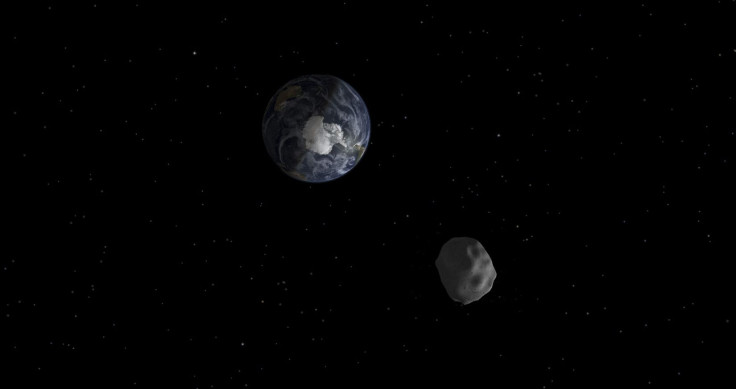NASA Asteroid Tracker: 2 Asteroids Headed For Earth Today

Data from NASA’s Center for Near Earth Object Studies (CNEOS) revealed two massive asteroids flew past Earth today. The asteroids are just some of the cosmic rocks that the space agency is monitoring due to their near-collision paths with Earth.
The details about the asteroids and other near-Earth objects were collected by CNEOS for the Jet Propulsion Laboratory (JPL). According to JPL’s database, the two asteroids that had recent near-misses with Earth are called 2019 JH8 and 2003 LH.
Despite being the smaller of the two, 2019 JH8 has a maximum diameter of 30 meters, which is slightly longer than two average-sized city busses. At around 3:39 pm GMT on May 28, 2019 JH8 flew past Earth with only a distance of 0.02319 astronomical units from the planet, which is roughly 2.2 million miles. It had a speed of around 15,400 miles per hour as it passed by Earth.
The second asteroid that approached the planet was significantly larger than 2019 JH8. According to CNEOS, 2003 LH had a maximum diameter of 54 meters and was moving at a speed of 16,400 miles per hour. Unlike 2019 JH8, 2003 LH flew with a distance a bit farther from Earth at about 3.3 million miles. It approached the planet on May 28 at 11:20 am GMT.
2019 JH8 and 2003 LH are the latest asteroids to have near-collisions with Earth this week. Despite the alarming number of cosmic rocks careening towards Earth recently, NASA maintained that the planet is not in danger. NASA noted that it has no record of an asteroid that’s on a path straight to Earth.
“NASA knows of no asteroid or comet currently on a collision course with Earth, so the probability of a major collision is quite small,” the space agency said according to The Sun. “In fact, as best as we can tell, no large object is likely to strike the Earth any time in the next several hundred years.”
NASA currently has no data regarding the past and future records of 2019 JH8. For 2003 LH, on the other hand, NASA’s records go from 1904 to 2069. According to the data, the time when 2003 LH flew closest to Earth was on May 27, 1960. During this time, the asteroid was 760,000 miles from the planet.

© Copyright IBTimes 2025. All rights reserved.





















